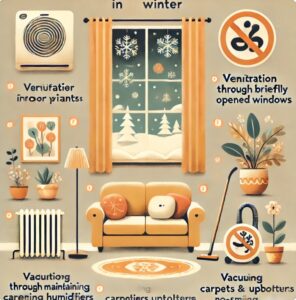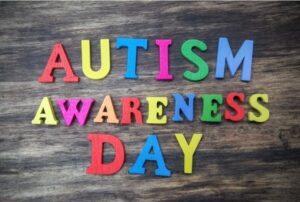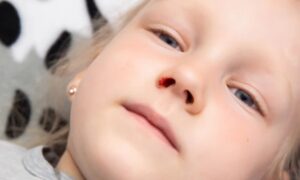Children’s health is always a top concern for parents, especially when they experience symptoms like nasal congestion. Many parents may wonder: is my child's nasal congestion due to a common cold or is it something more serious like sinusitis? Take 7-year-old Jason from the U.S., for example. Recently, he has been complaining about nasal congestion, difficulty sleeping at night, and feeling tired during the day. After observing his symptoms for a few days, his parents begin to wonder: is Jason’s nasal congestion just a common cold, or could it be a sign of sinusitis?
To answer this question, it’s important to first understand the differences between the common cold and sinusitis, including their symptoms, causes, and treatment methods. In this article, we will provide parents with useful guidelines to help you distinguish between these two conditions and ensure your child gets the right care.
Comparing Symptoms of Common Cold and Sinusitis
1. Common Cold Symptoms
The common cold is a viral infection of the respiratory system, usually mild in nature and short-lived. When children catch a cold, the typical symptoms include:
- Nasal Congestion: Blocked nose and increased mucus production, making it difficult for children to breathe through their nose.
- Cold-like Symptoms: Mild cough, sore throat, sneezing, and low-grade fever.
- Fatigue and Discomfort: Children with a cold often feel tired, especially at night.
- Duration: Most cold symptoms resolve within 7 to 10 days, gradually improving as time goes on.
2. Sinusitis Symptoms
Sinusitis refers to inflammation of the sinuses, which are cavities around the nose and eyes. It is often caused by bacterial infections but can also result from a cold or allergic reactions. The symptoms of sinusitis are usually more severe and last longer compared to a common cold. Common symptoms include:
- Persistent Nasal Congestion: If nasal congestion lasts for more than 10 days without improvement, it could be a sign of sinusitis.
- Yellow or Green Nasal Discharge: Unlike the clear mucus of a common cold, sinusitis often involves thick, yellow or green nasal discharge.
- Facial Pain or Pressure: Children may experience pain or tenderness around the forehead, eyes, or cheeks, indicating sinus pressure.
- Chronic Cough: A cough that worsens at night and disrupts sleep is common in children with sinusitis.
- Fever: Moderate to high fever may occur, particularly in the early stages of sinusitis.
How to Distinguish Between the Common Cold and Sinusitis
- Symptom Duration: A cold typically resolves within a few days, whereas sinusitis lasts longer (usually more than 10 days) and often worsens or fails to improve on its own.
- Mucus Color: In a cold, mucus is usually clear, while in sinusitis, it turns yellow or green and is thicker in consistency.
- Facial Pain and Tenderness: Sinusitis often causes pain or tenderness in the face, especially around the forehead, eyes, or cheeks. If your child complains of these discomforts, it could indicate sinusitis.
- Fever: While a mild fever is common with a cold, a high or persistent fever is more likely to occur with sinusitis.
When Should You See a Doctor?
Although most colds can be managed at home and resolve on their own, you should seek medical attention if:
- Nasal congestion lasts for more than 10 days and shows no improvement.
- Mucus turns yellow or green and is accompanied by facial pain.
- Your child has a persistent high fever (especially above 38.5°C) that does not improve.
- Your child experiences severe headache, ear pain, or eye pain.
Treatment Options for Nasal Congestion
1. Caring for a Common Cold
- Stay Hydrated: Cold symptoms can make children more prone to dehydration, so it’s essential to keep them hydrated. Offer water, clear soups, or fruit juices.
- Saline Nasal Spray: Saline sprays can help relieve nasal congestion by flushing out mucus and allergens from the nasal passages.
- Humidify the Air: Use a humidifier to increase the moisture in the air, which can help alleviate nasal congestion and dryness.
- Rest and Sleep: Ensure your child gets plenty of rest and sleep to recover from the cold.
2. Treating Sinusitis
- Medication: If sinusitis is caused by a bacterial infection, the doctor may prescribe antibiotics. For viral sinusitis, symptom management is usually the approach.
- Keep the Nasal Passages Clear: Use saline sprays or nasal irrigation to help clear mucus from the sinuses.
- Warm Compress: Apply a warm compress to your child’s forehead or cheeks to relieve pressure and reduce facial pain.
- Medical Follow-up: If symptoms persist or worsen, it’s important to see a pediatrician or an ENT specialist for further evaluation and treatment.
Conclusion
Nasal congestion in children can be caused by many factors, including both the common cold and sinusitis. Understanding the differences in symptoms and duration is crucial for parents to make the right decision for their child’s health. If your child’s congestion lasts longer than usual, is accompanied by facial pain, yellow or green mucus, or a high fever, it’s best to consult a doctor to rule out sinusitis. Providing a warm and restful environment, keeping your child hydrated, and using appropriate treatments will help your child recover more quickly.
References
- "Sinusitis in Children" - American Academy of Pediatrics
- "Common Cold in Children" - Mayo Clinic
- "When to Seek Medical Care for Your Child's Cold" - WebMD
- "How to Relieve Your Child's Cold and Flu Symptoms" - KidsHealth













